UPSC Daily Current Affairs: 14th January 2025 | Current Affairs & Hindu Analysis: Daily, Weekly & Monthly PDF Download
GS1/Indian Society
Transforming ‘Men’-Talities, Redefining Masculinity
Source: The Hindu
 Why in News?
Why in News?The International Day for the Elimination of Violence Against Women (November 25) serves as a sombre reminder of the persistent global issue of gender-based violence. Despite decades of advocacy, nearly one in three women worldwide has suffered violence at the hands of men, highlighting the urgent need to engage men as key agents of change in combating this violence.
- Nearly one in three women globally experiences violence, necessitating men's involvement in solutions.
- Early socialization and societal expectations contribute to harmful definitions of masculinity.
- Toxic masculinity perpetuates violence and emotional isolation among men.
- Media and cultural narratives reinforce traditional gender roles.
- Initiatives like UNESCO's Transforming MENtalities aim to redefine masculinity and promote gender equality.
Additional Details
- Early Socialization: Boys are often raised with messages equating masculinity with authority and control, leading to emotional suppression and aggressive behavior.
- Toxic Masculinity: This concept describes harmful behaviors linked to traditional male roles, emphasizing aggression and dominance while trapping men in cycles of emotional isolation.
- Role of Media: Films and advertisements often portray men as aggressive, reinforcing harmful stereotypes and discouraging healthy emotional expression.
- Case Study - India: Initiatives like Mardon Wali Baat and GEMS focus on engaging men and boys in discussions about gender equality and challenging traditional roles.
- UNESCO’s Initiative: The Transforming MENtalities initiative positions men as active participants in promoting gender equality through positive role modeling and community engagement.
As we move forward, it is crucial to celebrate the men and boys challenging traditional masculinities. By redefining what it means to ‘be a man,’ we can foster a society free from violence where everyone can thrive. Education, advocacy, and collective action are essential in eliminating violence against women and building a more just and equitable society.
GS2/International Relations
Diego Garcia Island Detention of Fishermen
Source: The Hindu
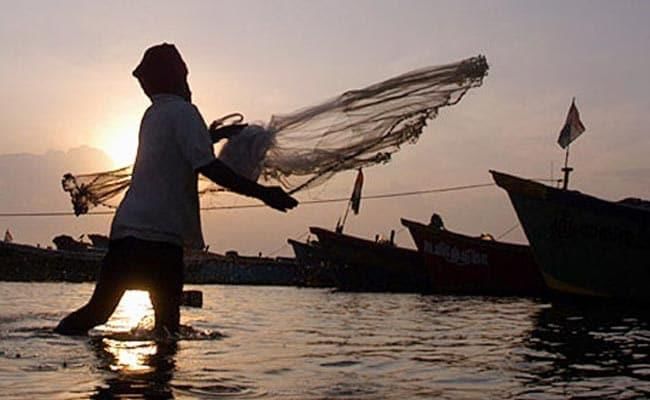 Why in News?
Why in News?Recently, it was reported that as many as 15 fishermen from Tamil Nadu were detained near Diego Garcia Island, which is part of the British Indian Ocean Territory (BIOT), for allegedly crossing the maritime boundary.
- Diego Garcia is the largest and southernmost island of the Chagos Archipelago.
- The island has been a significant military base for the United States since the 1960s.
- There has been a recent UN vote urging the UK to end its administration over the Chagos Archipelago.
Additional Details
- Geography: Diego Garcia is a coral atoll occupying an area of 44 sq. km. It features a V-shaped, sand-fringed cay approximately 24 km long and 11 km wide, with a lagoon open at the north end.
- Historical Context: Discovered by the Portuguese in the early 16th century, Diego Garcia was historically a dependency of Mauritius. In 1965, it was separated from Mauritius to form part of the newly established BIOT.
- Military Significance: In 1966, the UK leased Diego Garcia to the US for a naval base, leading to the forced removal of the island's inhabitants. It is now a major geostrategic and logistics support base for the US in the Indian Ocean.
- Recent Developments: The 2019 UN General Assembly vote called for the end of British colonial administration over the Chagos Archipelago, including Diego Garcia. The UK government has since announced plans to transfer sovereignty of the archipelago back to Mauritius.
The situation surrounding Diego Garcia highlights ongoing tensions related to sovereignty and international relations, particularly in the context of colonial legacies and military strategy in the Indian Ocean region.
GS3/Economy
Progress, Challenges and the Path to Self-Reliance of India's Urea Industry
Source: Mint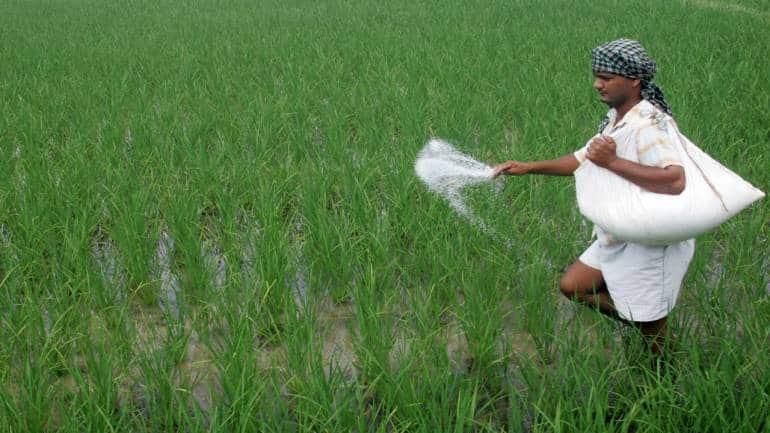 Why in News?
Why in News?
India's urea industry has made remarkable progress despite facing challenges in the fertilizer sector, such as shortages of di-ammonium phosphate (DAP) and limited manufacturing investments. The increase in domestic production aligns with the central government's goal of achieving atma nirbharta (self-reliance).
- Significant growth in domestic urea production.
- New energy-efficient plants and strategic investments are underway.
- Policy recommendations aim to balance domestic production and imports.
Additional Details
- Overview of Fertiliser Sector in India: The Economic Survey 2023-24 highlights that the Indian agriculture sector supports about 42.3% of the population and contributes 18.2% to the country's GDP. Fertilizers, alongside water and seeds, are critical for enhancing agricultural productivity. The government's efforts over the past decade have led to an increase in total fertilizer production from 385.39 million tonnes (mt) in 2014-15 to 503.35 mt in 2023-24.
- Urea Fertilizer: Urea is a nitrogen-rich fertilizer that contains 46% nitrogen, promoting crop growth and development. It is considered low-cost due to its high nitrogen content, which reduces transportation and storage expenses. Urea can be directly absorbed by plants or converted by soil microorganisms into ammonia and carbon dioxide.
- Rising Domestic Urea Production: From 2011-12 to 2023-24, domestic urea production increased from 22 mt to 31.4 mt, while imports dropped from 7.8 mt to 7 mt. This fiscal year, imports are expected to decrease by 31.7%, potentially falling below 5 mt, the lowest level since 2006-07.
- Greenfield Projects and Efficiency: Six new urea plants contributed significantly to production, with a total output of 7.55 mt in 2023-24, funded by investments ranging from Rs 6,000-8,600 crore per plant. These plants focus on more energy-efficient operations, consuming about 5 giga-calories (GCal) per tonne, compared to older units' consumption of 5.5-6.5 GCal.
- Make vs. Buy Debate: Domestic production costs range from $427-$493 per tonne, while imported urea costs between $370-$403 per tonne. Although imported urea is cheaper, logistical costs make domestic production more viable in northern and eastern regions.
- Strategic Shift and Policy Recommendations: A focus on regional production in Northern and Eastern India is recommended, alongside rational pricing strategies to balance domestic use and reduce dependency on imports.
In conclusion, India's urea industry has made significant strides toward self-reliance through new energy-efficient plants and strategic investments. However, to sustain this progress, it is essential to implement policy interventions regarding pricing, regional production focus, and judicious fertilizer application.
GS3/Defence & Security
PM Inaugurates Strategic Z-Morh Tunnel in J&K
Source: Hindustan Times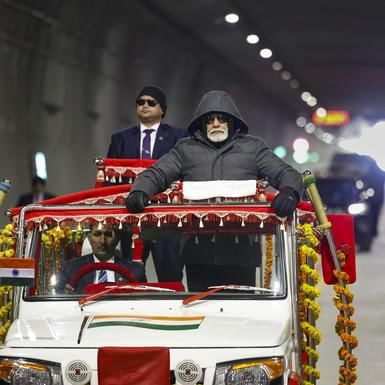 Why in News?
Why in News?
Prime Minister Narendra Modi has inaugurated the 6.5 km Z-Morh tunnel in the Ganderbal district of Jammu and Kashmir. This significant infrastructure project, constructed at a cost of ₹2,400 crore on the Srinagar-Leh National Highway, facilitates seamless connectivity between Gagangir and Sonamarg. It is expected to enhance summer travel to Ladakh and improve regional accessibility.
- The Z-Morh Tunnel is hailed as an "engineering marvel" and a game changer for the region.
- The project, overseen by the National Highways and Infrastructure Development Corporation Limited (NHIDCL), began in May 2015 and was completed in 2024.
Additional Details
- About the Z-Morh Tunnel: This strategic infrastructure project connects Sonamarg to the Kashmir Valley year-round and is part of the broader Zojila Tunnel project, which aims to ensure uninterrupted connectivity between Srinagar and Ladakh.
- Timeline and Challenges:
- Conceived in 2012, the project faced initial delays due to financial and administrative challenges under the first contractor, Tunnelway Ltd.
- Retendering occurred in 2019 after the initial contractor halted work due to financial issues.
- Originally expected to be completed by 2016-2017, the timeline was pushed to 2024 for the Z-Morh Tunnel, while the Zojila Tunnel is targeted for December 2026.
- A soft opening was held in February 2024, with the final inauguration delayed due to the Model Code of Conduct for Jammu and Kashmir elections.
- Technological Advancements: The tunnel is equipped with advanced technology for real-time updates, features a 7.5-meter-wide parallel escape passage for emergencies, and allows vehicles to travel at speeds up to 70 km/h, handling a capacity of 1,000 vehicles per hour.
- Strategic Importance: Located at an altitude of 8,650 feet, the Z-Morh Tunnel plays a crucial role in India's defense by ensuring all-weather connectivity to Ladakh, enhancing links between the Union Territory of Ladakh and the rest of the country.
- Reduced Dependence on Air Transport: The tunnel will facilitate efficient road transportation for the Indian Army, reducing the reliance on the Indian Air Force for troop and supply movement.
- Defense Preparedness and Geopolitical Advantage: It strengthens India's defense posture in a geopolitically sensitive region, enhancing access to critical areas like the Siachen Glacier and improving logistical support.
- Boost to Winter Tourism: The Z-Morh Tunnel is expected to transform Sonamarg into a year-round tourist destination, promoting winter tourism and adventure sports.
- Economic Impact: By providing all-weather access to Sonamarg, the tunnel supports local livelihoods and expands tourism opportunities, contributing significantly to the region's economic growth.
The inauguration of the Z-Morh Tunnel marks a significant milestone for infrastructure development in Jammu and Kashmir, promising enhanced connectivity, improved defense logistics, and economic opportunities for the region.
GS2/Polity
State Public Service Commission (SPSC)
Source: India Today
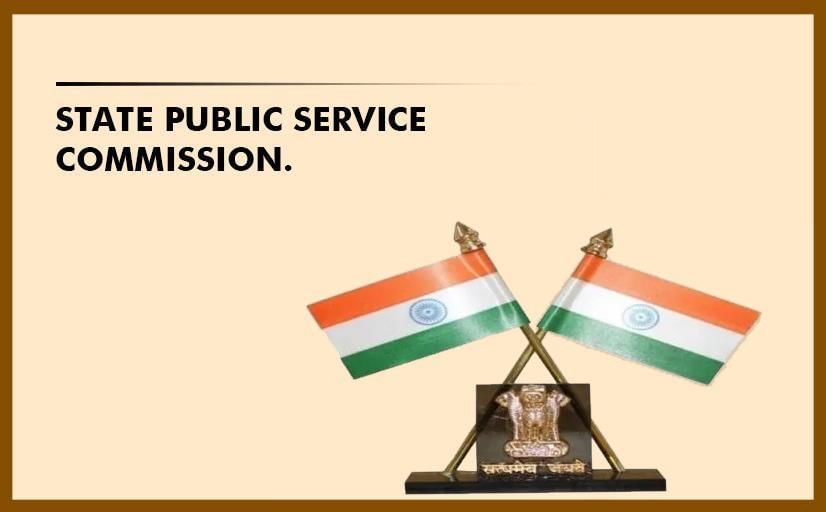 Why in News?
Why in News?The Vice President recently addressed the inauguration ceremony of the 25th National Conference of Chairpersons of State Public Service Commissions (SPSCs) held in Bengaluru.
- SPSCs are independent constitutional bodies established under Articles 315 to 323 of the Constitution of India.
- They are modeled after the Union Public Service Commission (UPSC) to recruit for state services.
Additional Details
- Establishment: SPSCs were proposed under the Government of India Act (GoI), 1919, and were formally established through the GoI Act, 1935, influenced by the recommendations of the 'Lee Commission (1924)'.
- Functionality: They serve as the central recruiting agency for the state, distinct from the Department of Personnel.
- Recommendations: Recommendations made by SPSCs are advisory in nature, allowing the government discretion to accept or reject them, while being accountable to the Legislature.
Composition
- The SPSC is composed of a Chairman and other members appointed by the Governor of the state.
- At least 50% of the members must have held a government post (Central or State) for at least 10 years.
- Members serve a term of 6 years or until they reach the age of 62, whichever comes first.
- The Governor holds discretionary power over the composition and service conditions of the commission.
- Members can resign by addressing their resignation to the Governor.
- Removal of members is initiated for reasons such as insolvency, paid employment, infirmity, or misbehavior, following a Supreme Court inquiry.
Powers and Functions
- Recruitment and Appointments: SPSCs conduct exams for appointments to state civil services and posts.
- Advisory Role: They provide guidance on recruitment methods, promotions, transfers, and disciplinary matters.
- Judicial Appointments: SPSCs are consulted, along with the State High Court, on rules for appointments to the state judiciary (excluding district judges).
- Annual Reporting: They submit a performance report to the Governor, who presents it to the State Legislature with explanations for non-acceptance of advice.
- Disciplinary Action: The government consults SPSCs in disciplinary matters involving civil servants, alongside the State Vigilance Commission.
Security and Independence
- Tenure Protection: Members can only be removed for reasons specified in the constitution.
- Financial Independence: The expenses of SPSCs are charged on the Consolidated Fund of the State, requiring no legislative vote.
- Post-Tenure Appointments: Members can be appointed as Chairman or members of another SPSC but cannot hold other government roles.
Previous Year Question (PYQ)
[2015] Consider the following statements:
- 1. The Executive Power of the Union of India is vested in the Prime Minister.
- 2. The Prime Minister is the ex officio Chairman of the Civil Services Board.
Which of the statements given above is/are correct?
- (a) 1 only
- (b) 2 only
- (c) Both 1 and 2
- (d) Neither 1 nor 2
This structured overview provides essential information about the State Public Service Commission, its roles, and its significance within the framework of state governance in India.
GS2/Polity
Right to Access to Justice Not Absolute: Supreme Court (SC)
Source: Live Law
Why in News?
The Supreme Court recently imposed a fine of Rs. 1 Lakh on an individual who repeatedly filed unnecessary and baseless cases. The Court emphasized that while everyone has the right to approach the courts, this right must be exercised responsibly.
- The right to access justice is fundamental but not unlimited.
- Abuse of judicial processes can lead to penalties.
What is meant by ‘Right to Access to Justice’?
- Right to Access to Justice: This principle ensures that individuals can seek remedies for grievances through formal or informal justice systems. It is foundational to the rule of law, allowing all citizens to resolve legal issues and hold authorities accountable.
- Without access to justice, individuals may struggle to exercise their rights, challenge discrimination, or obtain redress for grievances.
Related Provisions
- Article 14 (Equality before the law): Guarantees equal treatment under the law for all individuals, irrespective of their background. The landmark case of Maneka Gandhi v. Union of India (1978) illustrated that the right to life under Article 21 includes the right to a fair procedure.
- Article 21 (Right to life and personal liberty): Protects the right to life, interpreted by the Supreme Court to include access to a fair legal process. In State of Maharashtra v. Chandrabhan (1983), the Court recognized access to justice as a vital aspect of the right to life.
- Legal Services Authorities Act, 1987: Ensures free legal aid for the underprivileged, promoting equitable access to justice. This was reinforced in National Legal Services Authority v. Union of India (2014), where the Court mandated effective legal aid programs for marginalized communities.
- Article 39A (Free legal aid): Requires the state to provide free legal assistance to prevent justice denial due to financial incapacity. For instance, in Laxmi v. Union of India (2014), the Supreme Court ordered the government to ensure legal aid for acid attack victims.
- Judicial Precedents: The Supreme Court has consistently expanded access to justice. In Delhi Domestic Workers Forum v. Union of India (2016), the Court acknowledged the need for legal protections for domestic workers.
- National Legal Services Authority (NALSA): NALSA plays a critical role in providing legal aid to marginalized communities. In NALSA v. Union of India (2014), the Court directed the establishment of legal aid camps for tribal and marginalized populations.
Essential Elements for the Right to Access to Justice
- Availability of Legal Remedies: Access to effective remedies for grievances is crucial.
- Affordability: Legal services must be financially accessible, with provisions for free legal aid.
- Awareness and Information: Citizens should be informed about their rights and available legal processes.
- Fair Procedures: Judicial processes must be transparent and equitable, ensuring all parties can present their cases.
- Physical and Legal Access: Access includes not only entering courts but also having support systems like legal representation.
Way Forward
- Strengthening Legal Aid and Awareness Programs: Expanding legal aid services and awareness campaigns to inform marginalized groups about their rights.
- Reforming Judicial Infrastructure: Improving the efficiency and accessibility of judicial systems by addressing delays and enhancing court infrastructure.
In conclusion, while the Right to Access to Justice is fundamental, it must be exercised responsibly to prevent misuse of the judicial system. Ongoing reforms and awareness initiatives are essential to ensure that justice remains accessible to all citizens.
GS2/International Relations
Indians Abroad: Challenges and Contributions
Source: Times of India
Why in News?
At the 18th Pravasi Bharatiya Divas (PBD), the Prime Minister referred to the Indian diaspora as “ambassadors to the world.” He commended their ability to integrate into local communities, their assistance to those communities, and their contributions to India's development.
- The significance of the Pravasi Bharatiya Divas.
- The challenges faced by Indians living abroad.
- The role of the Indian diaspora in enhancing India’s global influence.
- Government initiatives aimed at engaging with the diaspora.
- Strategies for improving relations with the diaspora.
Additional Details
- Significance of Pravasi Bharatiya Divas: This day commemorates Mahatma Gandhi's return to India in 1915, acknowledges the achievements of Indians abroad, bolsters their connections with India, and celebrates their contributions to India's growth and international standing.
- Challenges Faced by Indians Abroad:
- Increasing Visa Restrictions: Stricter immigration policies in countries like the U.S. and U.K. have impacted skilled Indian workers, particularly during Donald Trump's presidency, creating anxiety over H-1B visas.
- Global Conflicts: Many Indians in Gulf countries face job insecurity due to fluctuating oil prices and labor laws; policies like "Saudisation" in Saudi Arabia have forced repatriation.
- Political Vulnerability: The Indian government's revocation of OCI cards from critics has instilled fear of repression among the diaspora, raising concerns over freedom of expression.
- Role of the Indian Diaspora:
- Economic Contributions: The diaspora contributes significantly to India's economy through remittances, totaling approximately $108 billion in 2022, which aids in poverty alleviation.
- Political Influence: Individuals of Indian origin, like Kamala Harris, hold significant political roles that enhance India's standing globally.
- Cultural Diplomacy: The diaspora promotes Indian culture and values worldwide through initiatives such as the International Day of Yoga.
- Networking Opportunities: The diaspora acts as a conduit for trade relations and foreign direct investment (FDI), bolstering India's economic position.
- Government Initiatives:
- Ministry of Overseas Indian Affairs: Established in 2004 to address diaspora issues, it was merged with the Ministry of External Affairs in 2016.
- Pravasi Bharatiya Diwas: An annual event since 2003, recognizing the Indian diaspora’s contributions to India’s progress.
- Know India Programme (KIP): A three-week orientation program for youth of Indian origin to connect them with contemporary India.
- Pravasi Kaushal Vikas Yojana (PKVY): This scheme enhances skills for Indian workers abroad through training relevant to their destination countries.
- Scholarship Programme for Diaspora Children (SPDC): Provides scholarships for PIO and NRI students pursuing undergraduate studies in India.
- Proxy Voting for NRIs: The Representation of the People (Amendment) Bill 2017 allows NRIs to vote by proxy, increasing their participation in India's democratic processes.
- Way Forward for Engagement:
- Inclusive Policies: The Indian government should create non-partisan policies that foster inclusivity among the diaspora.
- Addressing Concerns: Proactively dealing with visa restrictions and safety issues can improve trust between the diaspora and the government.
- Leveraging Expertise: Engaging the diaspora's expertise can facilitate knowledge transfer, investment in startups, and collaborations on innovation.
- Cultural Exchange Programs: Promoting initiatives that celebrate Indian heritage can strengthen community ties.
Understanding and addressing the needs of the Indian diaspora is essential not only for their well-being but also for enhancing India’s global influence and fostering positive international relations.
GS3/Economy
Amrit Bharat Trains 2.0
Source: ET now
Why in News?
The Railway Minister has recently unveiled significant advancements in the Amrit Bharat Version 2.0 trains, which aim to enhance the travel experience for passengers, particularly low and middle-income families.
- The initiative will see the manufacturing of 50 upgraded trains at the Integral Coach Factory (ICF) over the next two years.
- There are 12 noteworthy improvements in the new trains.
Additional Details
- Key Features:The upgraded trains are equipped with:
- Semi-automatic couplers
- Modular toilets
- Ergonomic seats and berths
- Emergency talk-back systems
- Continuous lighting systems, similar to Vande Bharat trains
- Advanced pantry car designs
- IoT-based water level indicators for efficient management
- External emergency lights for basic illumination during emergencies
- Train Design: The Amrit Bharat train operates as a Push-Pull Train with Linke Hofmann Busch (LHB) specifications, featuring locomotives at both ends for improved acceleration.
- Passenger facilities include aesthetically designed seats, enhanced luggage racks, mobile charging points with holders, LED lights, CCTV for security, and a public information system.
- The first version of these trains was launched in 2024.
This initiative reflects the government's commitment to improving railway infrastructure and passenger amenities, ensuring a more comfortable and efficient travel experience for all.
GS3/Science and Technology
Mission Mausam
Source: Indian Express
Why in News?
The Prime Minister will officially launch 'Mission Mausam' during the 150th foundation day celebrations of the India Meteorological Department (IMD).
- 'Mission Mausam' aims to enhance India's weather and climate-related scientific capabilities.
- The initiative has a budget of Rs 2,000 crore over the next two years.
- It will be implemented primarily by the IMD, the Indian Institute of Tropical Meteorology, and the National Centre for Medium-Range Weather Forecasting.
Additional Details
- Objective: The mission seeks to make India 'Weather-ready and Climate-smart' by improving forecasting accuracy and providing real-time local weather data.
- Technological Developments: It focuses on developing advanced weather surveillance technologies, high-resolution atmospheric observations, next-generation radars, satellites, and high-performance computing systems.
- The initiative will enhance data collection and analysis, improving both spatial and temporal accuracy of weather forecasts.
- It aims to address climate change challenges and improve stakeholders' ability to respond to extreme weather events.
In conclusion, 'Mission Mausam' represents a significant commitment to advancing meteorological science in India, enhancing public safety, and addressing the impacts of climate change through improved weather forecasting and climate understanding.
GS3/Science and Technology
Promotion of Science and Technology in India
Source: PIB
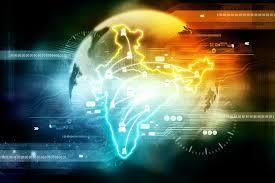 Why in News?
Why in News?Vice President Jagdeep Dhankhar has emphasized the necessity for authentic and practical research that can lead to substantial innovations and changes within society. He advocates for deeper indigenisation efforts and highlights the crucial role of patents and technology in positioning India as a leader on the global stage.
- India ranks sixth globally in patent filings according to the WIPO 2024 report.
- In 2023, India experienced a 15.7% increase in patent applications, marking a consistent trend of growth.
- The Vice President calls for research that is genuine, cutting-edge, and practically impactful.
- There is a need for enhancing India's contribution to global patents and nurturing domestic startups.
Additional Details
- Authentic and Practical Research: This type of research must address real-world challenges and drive innovation, creating meaningful solutions that have a long-lasting impact.
- India's Patent Status: India has made significant strides, entering the top ten globally for patents, trademarks, and industrial designs.
- Barriers to Effective Research: Issues such as superficial research outputs, limited global recognition, and a lack of awareness among youth about opportunities in innovation hinder progress.
- Way Forward: Strengthening collaborations between academia and industry, incentivizing impactful research, and enhancing corporate involvement in R&D are essential strategies for improvement.
In conclusion, fostering a robust research ecosystem in India requires a concerted effort to ensure that research is not only authentic but also practical and impactful. By addressing the existing barriers and focusing on innovation, India can significantly improve its standing in the global research landscape.
GS3/Defence & Security
Combat Air Teaming System (CATS) Programme
Source: Business Standard
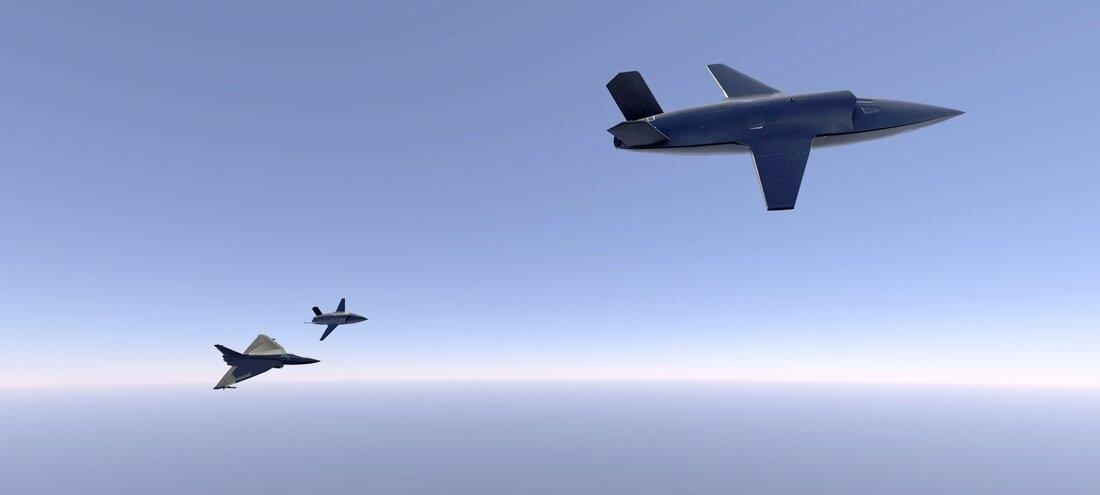 Why in News?
Why in News?The Hindustan Aeronautics Limited (HAL) has marked a significant achievement in its Combat Air Teaming System (CATS) programme by successfully completing the engine ground run of the full-scale demonstrator known as the CATS-Warrior loyal wingman.
- CATS aims to integrate unmanned and manned combat aircraft systems.
- It focuses on creating advanced aerial platforms for high-altitude surveillance and precision strikes.
- The programme emphasizes reducing risk to life during deep-penetration missions.
Additional Details
- CATS-Warrior: A stealth Unmanned Combat Aerial Vehicle (UCAV) designed to assist manned fighter jets. It is equipped to carry Smart Anti-Airfield Weapons (SAAWs) and Next-Generation Close Combat Missiles (NG-CCMs) in internal bays, enhancing its stealth and strike capabilities.
- CATS-Hunter: This system is expected to be an air-launched low-observable cruise missile, designed for precision strikes deep within enemy territory, similar to the SCALP missile used with the IAF's Rafale jets.
- ALFA-S Swarm Drones: These drones are launched from a carrier pod on the mothership and are capable of executing air-to-ground and air-to-air missions, particularly targeting enemy air defense systems. For instance, a Tejas aircraft can deploy three pods (12 drones), while a Su-30MKI can handle up to four pods (16 drones).
- CATS-Infinity Pseudo Satellite: This ultra-high-altitude, solar-powered pseudo satellite operates at around 70,000 feet and has a 90-day endurance. It fills the surveillance gap between UAVs and traditional satellites, equipped with advanced sensors and synthetic aperture radar to track targets and coordinate CATS Warrior missions. It also supports 4G and 5G services.
- The CATS programme envisions the Tejas Light Combat Aircraft (LCA) as a "mothership" to manage a network of autonomous platforms, including the CATS-Warrior.
The CATS programme represents a transformative step in aerial combat capabilities, enhancing operational efficiency and battlefield awareness while minimizing risks to pilots.
|
55 videos|5389 docs|1141 tests
|
FAQs on UPSC Daily Current Affairs: 14th January 2025 - Current Affairs & Hindu Analysis: Daily, Weekly & Monthly
| 1. What are the key initiatives under the 'Transforming Men-Talities, Redefining Masculinity' program? |  |
| 2. What is the current status of the detention of fishermen on Diego Garcia Island? |  |
| 3. What are the major challenges faced by India's urea industry in achieving self-reliance? |  |
| 4. What significance does the Z-Morh Tunnel hold for Jammu and Kashmir? |  |
| 5. How does the Supreme Court's ruling on the right to access justice impact citizens? |  |





















